Ear Injuries
If you've ever experienced pressure or discomfort in your ears when driving down a mountain or landing in a plane, you've felt the effects of an ear squeeze. As covered in the Physics section, pressure changes much faster in the water than on land, so special care must be taken to avoid serious injuries to the ears while descending and ascending.
Anatomy of the Ear
The ear consists of three major sections (click each term to highlight in picture):
- Outer Ear
- The outer ear is the visible portion that leads to the eardrum.
- Inner Ear
- The inner ear consists of the hearing organs that send sound signals to the brain.
- Middle Ear
- The middle ear is the air space connected to your airway.
As divers, we're concerned about the middle ear, which is the air space behind the eardrum. Air is supplied to the middle ear by a narrow airway called the Eustachian tube, which is connected to your airway.
Your middle ears are important balancing mechanisms for your body. If the pressure or temperature inside your middle ears differ from each other, you'll lose your sense of balance and experience dizziness or vertigo, which can be an uncomfortable experience.
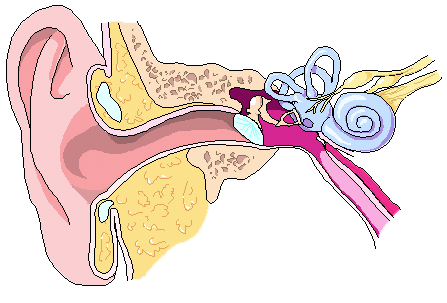





Middle Ear Squeezes
Middle ear squeezes occur when the pressure inside the middle ear is less than the surrounding pressure. This situation occurs during descent, and you've likely experienced it while landing on an airplane or driving down a mountain.
Pressure changes are very dramatic in the water, and most divers begin to feel the effects of a squeeze after descending only a few feet. As you descend, the pressure causes the narrow Eustachian tube to close, which creates a closed air space behind the eardrum.
As the surrounding pressure continues to increase, the flexible eardrum stretches in towards the middle ear. This causes the discomfort or pain you feel in your ear. If you ignore this pain, the eardrum will eventually rupture and allow water to enter the middle ear. This causes extreme pain, hearing loss, and dizziness or vertigo.
Ear Equalization Techniques
It's extremely important to equalize your ears early and often during descent in order to prevent a squeeze. Equalization is accomplished by adding air to the middle ear through the Eustachian tube.
Divers use several methods to equalize their ears. The most common is the Valsalva maneuver, which is performed by pinching the nose, closing your mouth, and gently exhaling until you hear or feel the pressure in your ears equalize. When using this procedure, take care not to exhale with too much force, as damage to your ears could result.
Some divers are successful at using other methods. These include wiggling your jaw, yawning, swallowing, or tilting your head from side to side. These methods can also be used in combination with the Valsalva maneuver to make equalization easier.
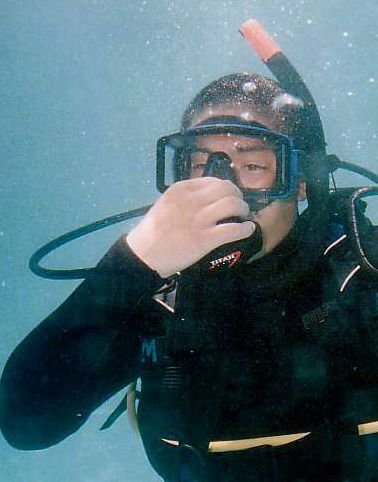
Health and Equalization
Equalizing your ears is difficult and dangerous when you have a head cold. In addition to congesting your Eustachian tubes, the mucous and bacteria in your airways can be forced into your middle ears when you equalize. This can cause an ear infection, so avoid diving when you have a cold.
You should avoid using decongestant medications when diving. These drugs can wear off while underwater and cause a condition known as a reverse block, which is covered later in this lesson. Additionally, the increase in pressure can intensify the adverse effects of these medications and cause extreme drowsiness or other complications.
Swimmers often use earplugs to prevent ear infection when swimming, but they are not safe for diving. Earplugs create an additional air space outside of the eardrum that cannot be equalized.

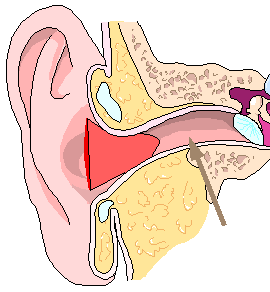
Preventing Ear Equalization Problems
There are some measures you should take to prevent equalization problems.
Equalize before you feel discomfort. If you wait too long, the Eustachian tubes will close to the extent that it will be impossible to equalize. If this occurs, immediately ascend a few feet or until the pressure is relieved, and attempt equalization again. Many divers equalize before their descent to relieve any pressure that exists at the surface.
A feet-first descent makes equalization easier, so try to avoid head-first descents. If you must descend head-first, such as during a skin dive, equalize continuously as you descend.
A slow descent also makes equalization easier, so until you learn to control your descent rate, you should hold onto a descent line. This helps you to stop your descent at any time and equalize before continuing to descend.
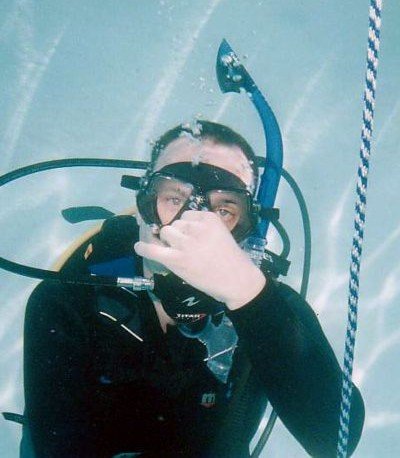
Ear Reverse Blocks
When you ascend, the air in your middle ear will expand as the pressure decreases. If your Eustachian tubes become blocked or congested during a dive, they will prevent the expanding air from escaping back out into the airway, which results in a reverse block during ascent.
Early signs of a reverse block include dizziness or vertigo during ascent. This is due to a difference in pressure between your two ears. If the air continues to expand without escaping the middle ear, the pressure can cause extreme pain and possible damage to your ear's internal organs.
The most common cause of a reverse block is a blockage of the Eustachian tubes due to decongestant drugs wearing off during a dive. For this reason, never use decongestant drugs to assist you with equalization.

Ascending With A Reverse Block
Ascending with a reverse block must be performed slowly and carefully in order to minimize the risk of injury.
If you experience a reverse block, immediately stop your ascent, hold onto a stable ascent line, and attempt to equalize the pressure by wiggling your jaw. If your attempts to equalize are unsuccessful, and you are running low on air, you will have to surface. In this event, ascend as slowly as possible. The pressure will cause you to feel dizzy, so hold onto a vertical ascent line if available.
If one ear suddenly releases pressure, or an eardrum ruptures and allows water to enter your middle ear, you'll experience a severe whirling sensation called vertigo. If this occurs, hold onto a stationary object until the vertigo subsides.
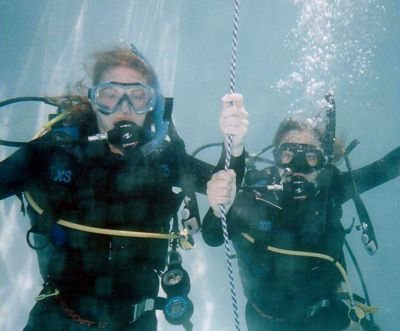
Treating Ear Injuries
Ear injuries can cause extreme pain, hearing loss, vertigo, and infection. For this reason, it's important to seek medical attention as soon as possible if you suspect you have damaged your ears. Fortunately, most cases do not result in permanent hearing loss, and you'll be able to return to the water as soon as the eardrum has healed and your doctor has given you an approval.
If you experience minor dizziness at the surface but do not feel any pain, you've likely experienced a minor reverse block. In this event, hold onto a stable object until the dizziness ends. This usually occurs within a few minutes.
